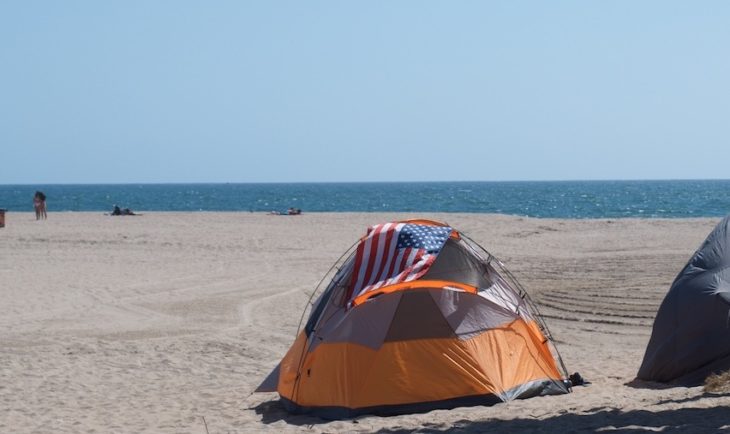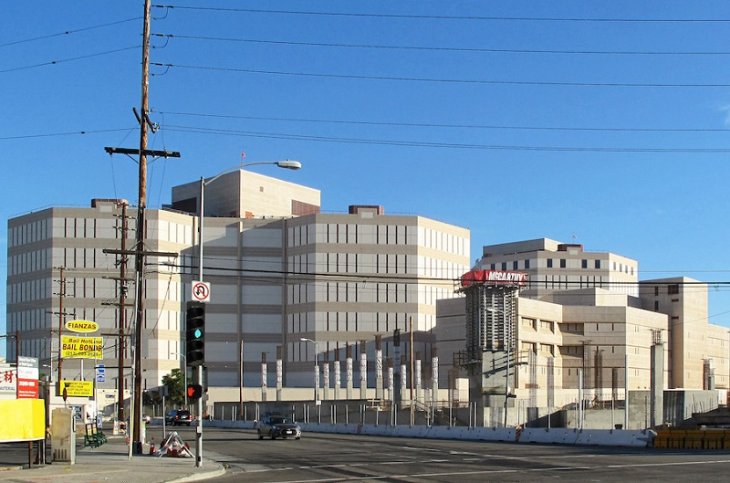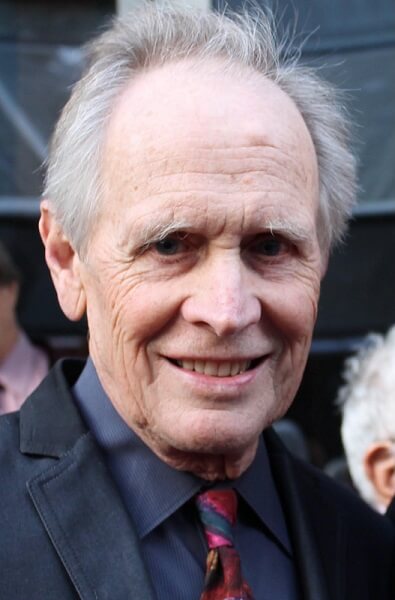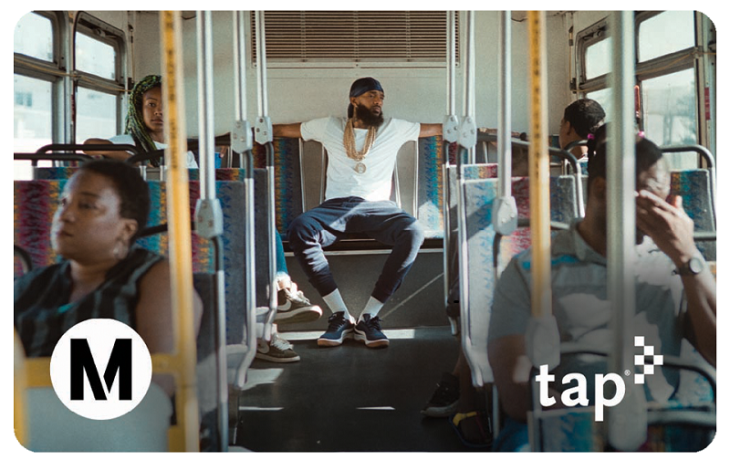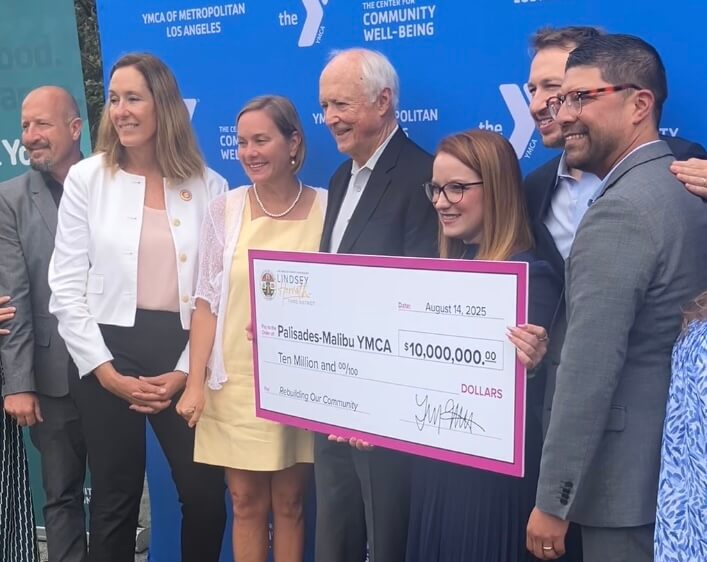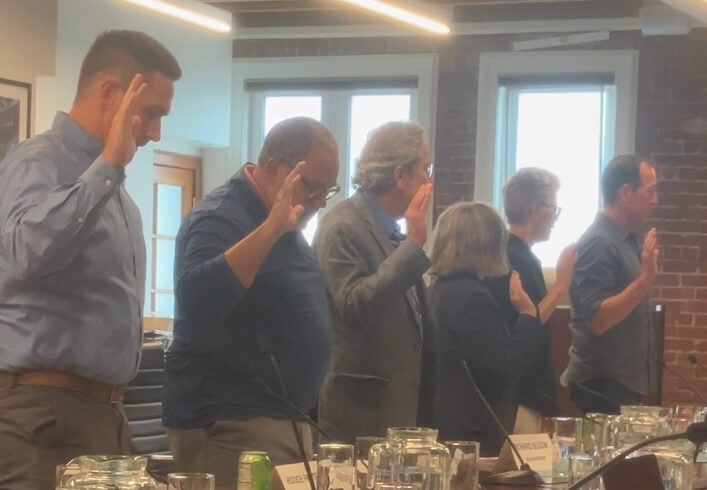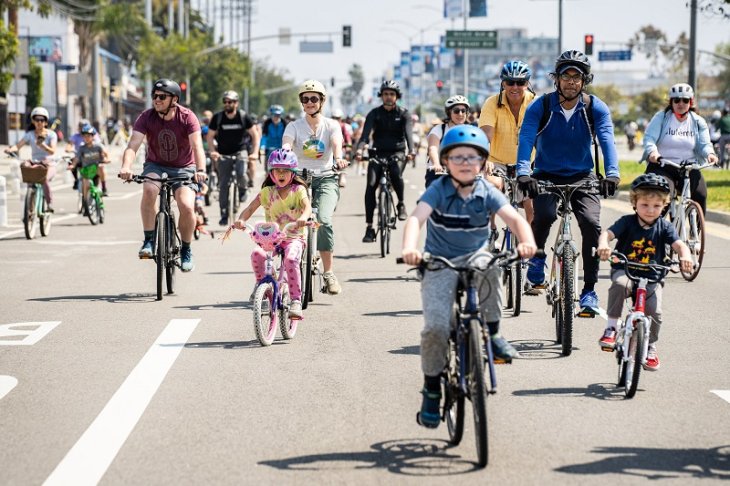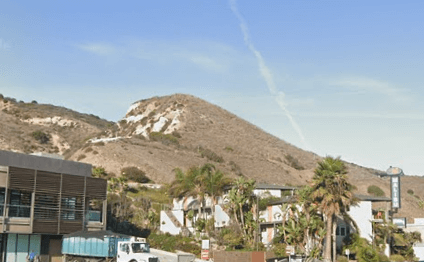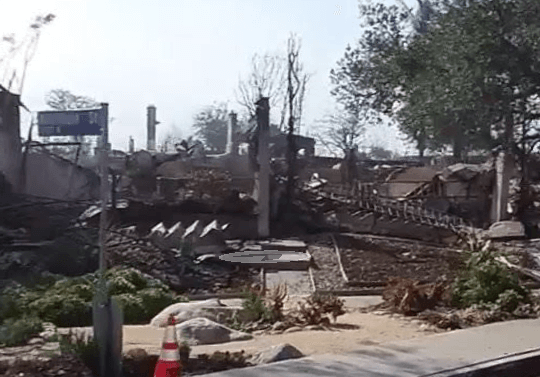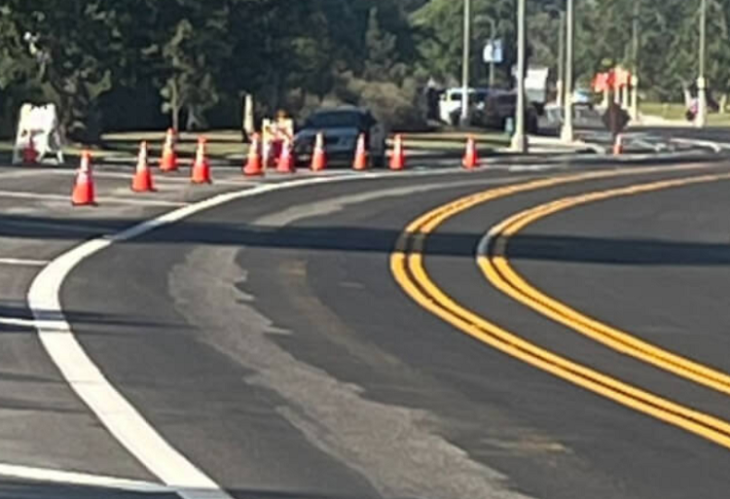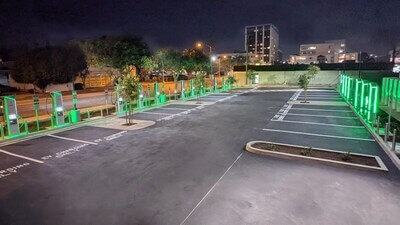By Jeff Hall
People are freaking out about the homelessness issue – and with good reason. The sidewalk camps are everywhere, trash abounds, the public health risks are real. Many homeless individuals suffer huge mental health issues, are addicted to drugs or alcohol and have been known to become violent, harass pedestrians or start fires. Our homeless brothers and sisters are in a trap. Let’s help them escape.
We tried when taxpayers passed Propositions HHH and H – money for housing and “wrap-around” services – mental healthcare, etc. But what have the city and county done with the money?
Here it is, years later, and fewer than 500 housing units have been built. Many of these units are projected to cost $500K or more. Meanwhile, the homeless population continues to grow and overwhelm our sidewalks and other public places.
Politicians seem reluctant to provide decent temporary shelter as we wait for the promised permanent structures to get built. But, given the cost of these permanent housing units, they will barely make a difference even when they do get built.
At one time, it seemed like the promise of HHH and H was that we’d fix LA’s homeless problem. Soon enough, people started saying maybe only 10,000 units would be built with Prop HHH money; now some who are close to this situation are saying, with rising costs, the real number might be closer to 5,000 units.
But we have over 50,000 homeless individuals in LA County. So, even in a best-case scenario, we’re talking about providing housing to maybe 20% of the number of people we need to shelter, and the real number might end up closer to 10%. Under current plans, we will barely scratch the surface of the humanitarian crisis we see all around us – and that continues to grow.
Far more emphasis needs to be put on temporary shelter. If we build affordable shelter – tent villages, tiny homes, mobile home villages, housing units built out of shipping containers – far more homeless individuals can be housed – and quickly.
As is clear by now, the money isn’t limitless. The tradeoff is this: Is it better to house 5,000-10,000 homeless individuals in really nice housing in coming years – or 50,000 homeless in less nice (but adequate) housing in the next two or three years?
One video I watched recently shows a young woman offering an explanation for why our elected officials favor these big permanent housing projects that cost so much and take forever to build (over temporary shelters that could get our homeless brothers and sisters off the streets right away).
Developers and construction unions, this young lady explained, make campaign contributions to candidates and elected officials who favor building big structures. These big projects provide profits to developers and jobs to construction union workers, who reward our elected officials with additional campaign contributions in order to perpetuate this pay-to-play system.
This theory might explain a lot, because so little else makes sense.
Once in a while, the city cleans up an area, as happened recently in Echo Park – but that’s just reshuffling things. Homeless individuals move to another part of town and the misery begins anew. That’s not a solution.
I hear people in high places say the homeless have civil rights and therefore we can’t or shouldn’t intervene. If they want to live on the sidewalks, we should let them, according to this line of reasoning.
But what about the civil rights of everyday citizens who pay the taxes that pay for city and county services – and the salaries of our elected officials? Don’t these citizens have a right to live in a safe, clean community? Shouldn’t they be able to count on those who serve in government to actually solve the homelessness problem?
When just about every approach taken has failed utterly and miserably – for decades on end – it’s time to try something new.
The following 22-point proposal could, I believe, make a real impact.
Some might find the following proposals “mean,” or “cruel.” In my opinion, our current policy is the cruelest policy of all, because nothing meaningful ever changes. People are dying out there and that will likely continue for years to come.
Here goes:
- First, let’s declare an emergency and appoint a homelessness “czar” empowered to cut through all the red tape, reduce regulatory barriers and quickly approve projects (including assembling tiny homes, erecting tent villages, building big buildings). Our new czar needs the authority to steer funding and other resources (healthcare, mental healthcare, security, food, sanitation, etc.) where needed.
- We need a very no-nonsense, take-charge individual, maybe a former military or FEMA official. Andy Bales of Skid Row’s Union Rescue Mission would make a good candidate. He knows what works, and what doesn’t, when it comes to dealing with homeless individuals. Our new czar should report to federal Judge Carter until this plan, which could take three-to-five years to implement, is completed.
Judge Carter understands the urgency of this situation in ways our elected officials don’t. If the city wants to appoint a czar, maybe that could work, but it’s hard to understand why the appointment of a czar didn’t occur years ago. The city seems peculiarly inept when it comes to grappling with the issue of homelessness. - In Phase One, we should build, on the outskirts of town, in big open areas, tent villages big enough to handle 100 individuals here, 100 individuals there. Maybe ten small villages of 100 each could surround a central gathering place that could accommodate 1,000 individuals, total. It should take no more than 60 days to assemble one of these villages and they should cost very little to build.
All kinds of creative housing ideas would be welcome – tiny homes, homes built out of shipping containers, homes built out of bamboo and thatch roofs, centralized bathrooms serving a village – anything that will result in quick and affordable housing. It’s possible many homeless individuals don’t even want a fancy housing unit that costs half a million. Done right, homeless individuals might like our new villages. - We should build spaces for 25,000 individuals within the next year and then be prepared to double this number, if needed, the following year. Private landholders who make their properties available to shelter the homeless should pay no property tax while the property remains in use sheltering the homeless. All unused city and county land EXCEPT sidewalks, public parks and beaches would be made available for these villages. Beaches and parks should be kept open for the public and LA’s tourists.
- Those in charge of our new tent villages will provide food, shelter, water, clothing, bathrooms, sanitation, showers, medical care, mental health care, dental care, spiritual counseling, security, job training, educational opportunities, a central community center, a storage area, access to wi-fi, etc. These camps should be welcoming, positive places that offer hope for a new beginning.
- Faith-based organizations, high school and college students and others from all across the region can help build the villages and conduct food drives. We can all get involved. A church in Brentwood conducts an annual event in Mexico in which a house is built in one weekend for a poor family. Church members ride a bus down to Mexico and back. Why can’t we do the same closer to home?
- We should start on a voluntary basis. We want the word to get out among the homeless living on the streets that these new camps are a good thing. Existing communities of homeless – for example, those who currently live and sleep together below the same bridge – should be allowed to stay together in one of our new camps.
These villages aren’t “jails” or places to push the problem “out of sight, out of mind” – they are “come in from the streets and regain your sanity” outposts whose goal is to prepare as many as possible to go back out into the world as productive citizens – as soon as possible. - Upon arrival into one of our new villages, individuals will be assessed. Those who are seriously mentally ill will be sent to a village location equipped to handle such situations. Those who are currently in a drug- or alcohol-induced fog will be weaned from substance abuse in special camps dedicated to this purpose.
This is a key reason shelters in our neighborhoods or on our beaches won’t work – homeless individuals with addiction issues would still have easy access to drugs and alcohol. We need to separate them from the temptation – and get them into rehab. - Before moving into one of our recovery villages, each homeless person who wants one will be provided one big plastic trash bin on wheels for his or her possessions. Whatever possessions the individual can fit into that trash bin can be taken to the new location. Whatever doesn’t fit will get tossed. Upon arrival, these bins must be inspected for any contraband and weapons or dangerous objects, which will be confiscated.
- In addition to counseling and rehab, homeless individuals in our camps will be provided job training, with a job guaranteed upon “graduation.” Those who would have a hard time fitting into a normal work environment – but capable of doing something productive – can be given jobs filling potholes, cleaning up street trash, feeding other homeless individuals, fixing cracked sidewalks, sorting recyclables, clearing brush in fire-prone areas, building temporary shelters for their fellow homeless. A job provides dignity and purpose – something many of our homeless brothers and sisters desperately need.
- Those homeless who have jobs (or who can enter the workforce now) will be placed in shelters within the city, close to public transportation and jobs. Those who hire the homeless get a tax break for up to two years. As these individuals get back on their feet and leave the city shelters, other homeless individuals still in the outer areas will take their places within the city. It’s a pipeline we’re building.
- In Phase Two, we tackle the more difficult situation – the “service resistant” (individuals who, even if offered housing, would prefer to stay on the streets). As shelter becomes available, we will offer it to them. It’s hard to tell someone he or she can’t sleep on the street if there’s no place to go.
But with our new camps, there will be a place to go. If homeless individuals still refuse shelter, then police – with a social worker’s help – will be authorized to remove these individuals from the streets and transport those individuals into one of our new villages. - Every homeless person who checks himself or herself in (or is checked in by authorities) will be registered so others looking for them can find them. Camps will have public phones and access to Zoom-like calls. Social workers can help the newly sheltered find family members or others who might want to know.
- We should set a goal of getting ALL homeless off the streets and into one of our villages within two years. We will keep building villages till every homeless person is housed in a safe place with all the needed services. As many formerly homeless individuals as possible should help staff these facilities.
- Meanwhile, the city and developers should continue to build more permanent housing. The city should ask for bids from contractors willing to build homes (or units) for $10K or less, from $10K to $50K per unit, and from $50K to $100K per unit. There should be a cap on expenditures of $100K per unit.
- If we limit spending to $10K per unit for our temporary housing units – and we provide shelter for 50,000 homeless individuals – that’s half a billion dollars, a little less than half the money provided by Proposition HHH. And that’s just for building our temporary villages. We need to provide all the services, too.
- Projects already approved should be completed. This is a reasonable compromise with Judge Carter, whose recent order to shift resources from permanent to temporary housing is sure to invite legal challenges and possible delays building housing. That’s only fair to contractors who played by the rules when submitting their plans. As we go forward from here, we should s offer financial incentives to those capable of building temporary and permanent housing quickly and inexpensively.
- Clearly HHH and H won’t cover the entire cost of building villages, permanent housing and providing all the needed services. If more money needs to be raised, we should start talking about that now. If our officials and developers can’t figure out how to reduce costs and build housing faster, more taxpayer money should not be approved; we should focus on maintaining our new villages, instead. If those in charge can come up with a plan that looks like it might work, I’m guessing corporations, philanthropies and wealthy individuals will gladly climb on board, effectively reducing the net cost of this program.
- In Phase Three, things get tougher. By this time, most homeless now have some form of housing and more and more will start their reintegration into society. But we must face the hard reality that quite a few mentally ill homeless individuals represent a danger to themselves and others – and they will likely never get better. We must pledge to do our best to keep these individuals as happy, safe and as well cared-for as possible – but they shouldn’t be allowed to return to the streets.
- The camps are intended to be temporary, but clearly we’ll need them for at least several years. If and when the camps are no longer needed, we’ll take them down. If our city and county officials can’t figure out how to build permanent housing in a timely and cost-effective manner, we will at least have our villages in place. That’s a lot better than letting homeless individuals sleep on the sidewalks indefinitely.
- If there is anything in this plan that might be interpreted as illegal, the city and county (or pro bono legal volunteers working on behalf of citizens) should assign several of their best legal minds to work on figuring out how to make this all legal, proposing and passing new laws, if necessary.
- Voters need to assert their influence. If a majority of voters makes clear it will only support candidates truly willing to tackle the issue of homelessness, either the politicians will come around or they will be voted out of office. Let’s identify candidates who are willing to embrace a new – and long overdue – approach. Let’s make homelessness the single issue we all focus on until we’ve solved it.
Anticipating some will be repelled by this plan, I ask: Have you got a better plan that actually gets homeless individuals off the streets in a timely and cost-effective manner? If so, the rest of us are all ears. Tell us how you would do it.
But please don’t reject this plan because it sounds harsh and will require courage. That’s where we’ve been for decades now. Surely we don’t want to be having this same conversation decades from now.
This 22-point plan will make the city a happier, safer place for everybody – including the homeless. We shouldn’t feel guilty if we proceed with this program. We should feel guilty if we don’t.
Agree? Disagree? Send me an email with your proposal: jeffhall@mirrormediagroupla.com.

